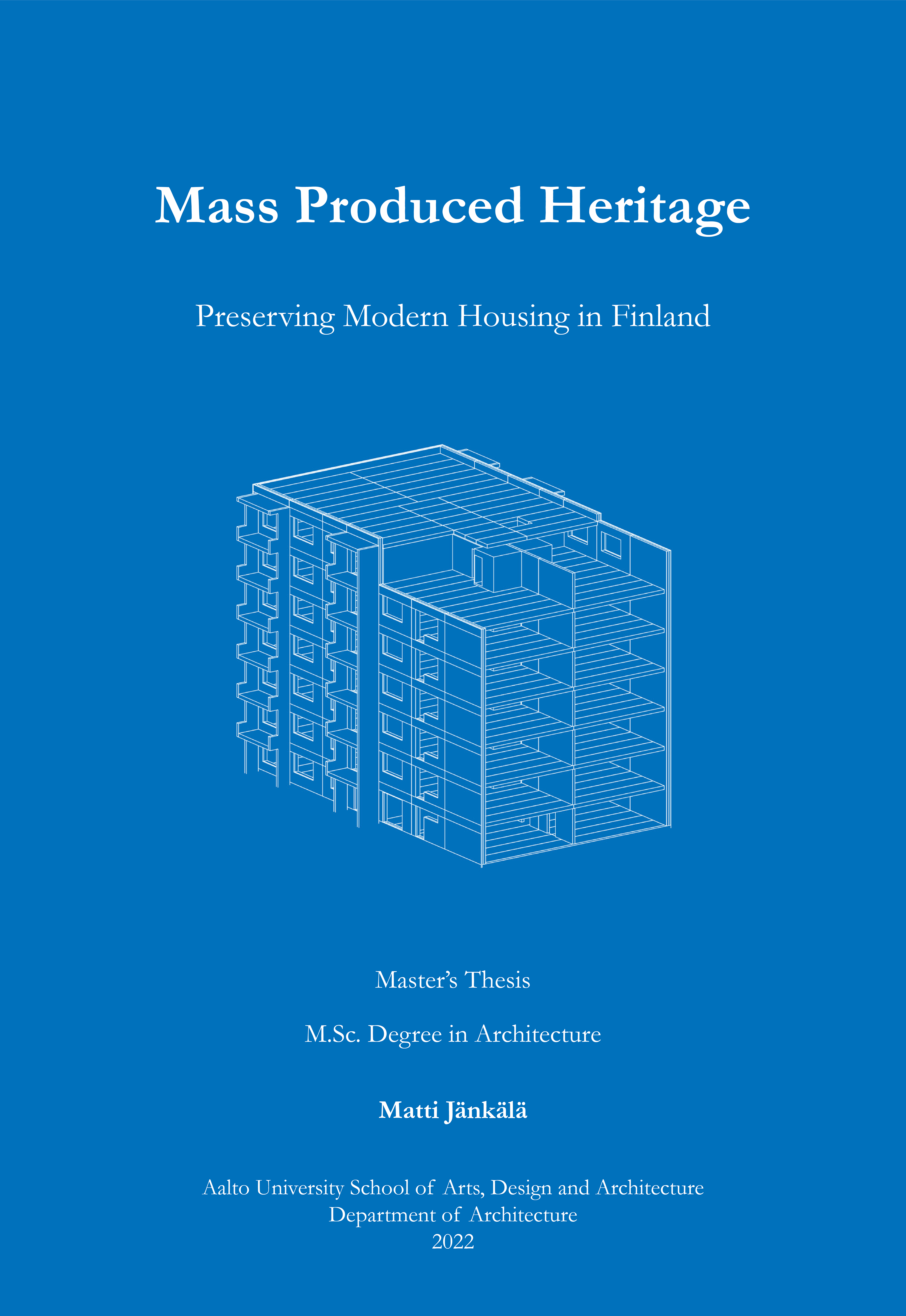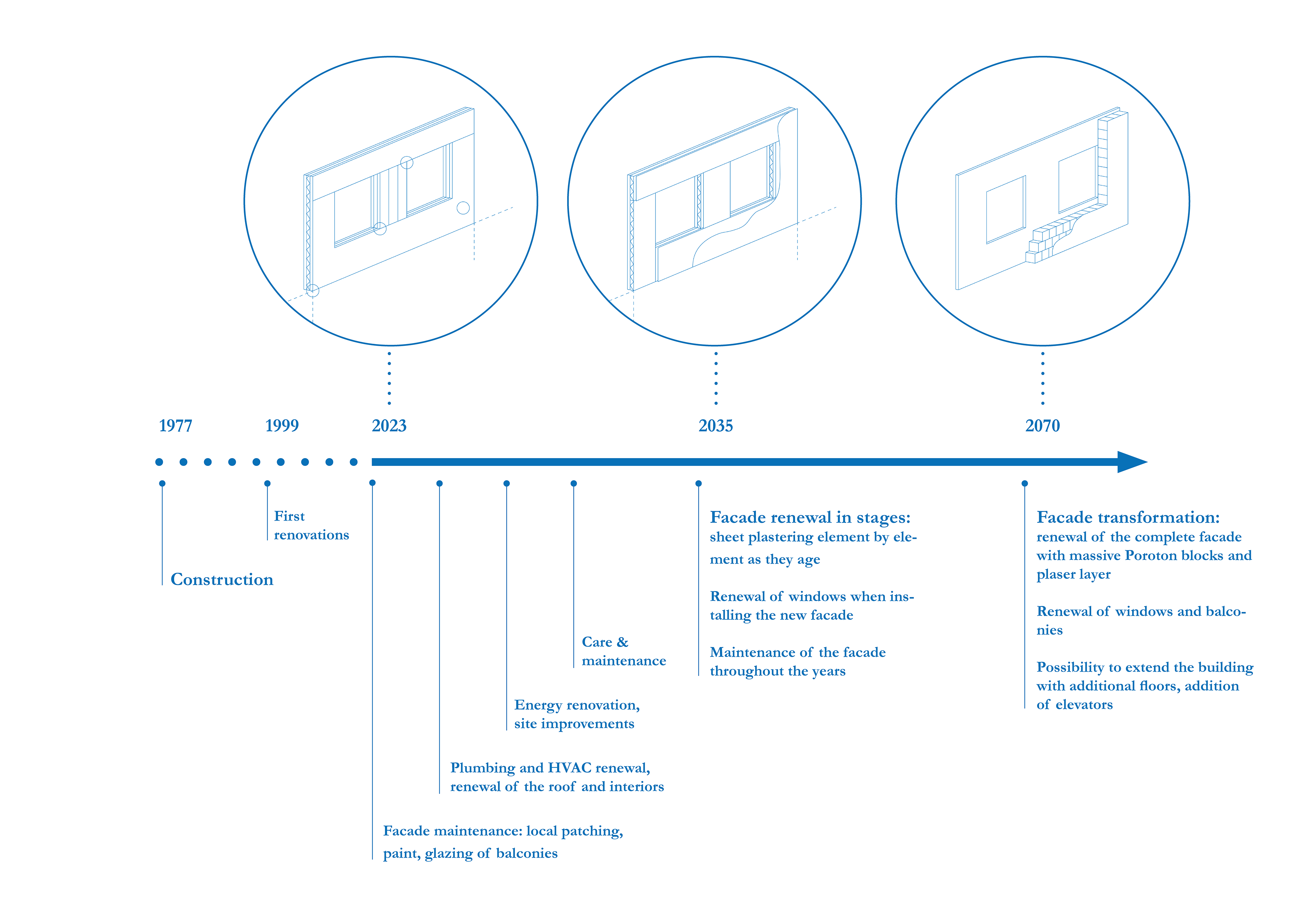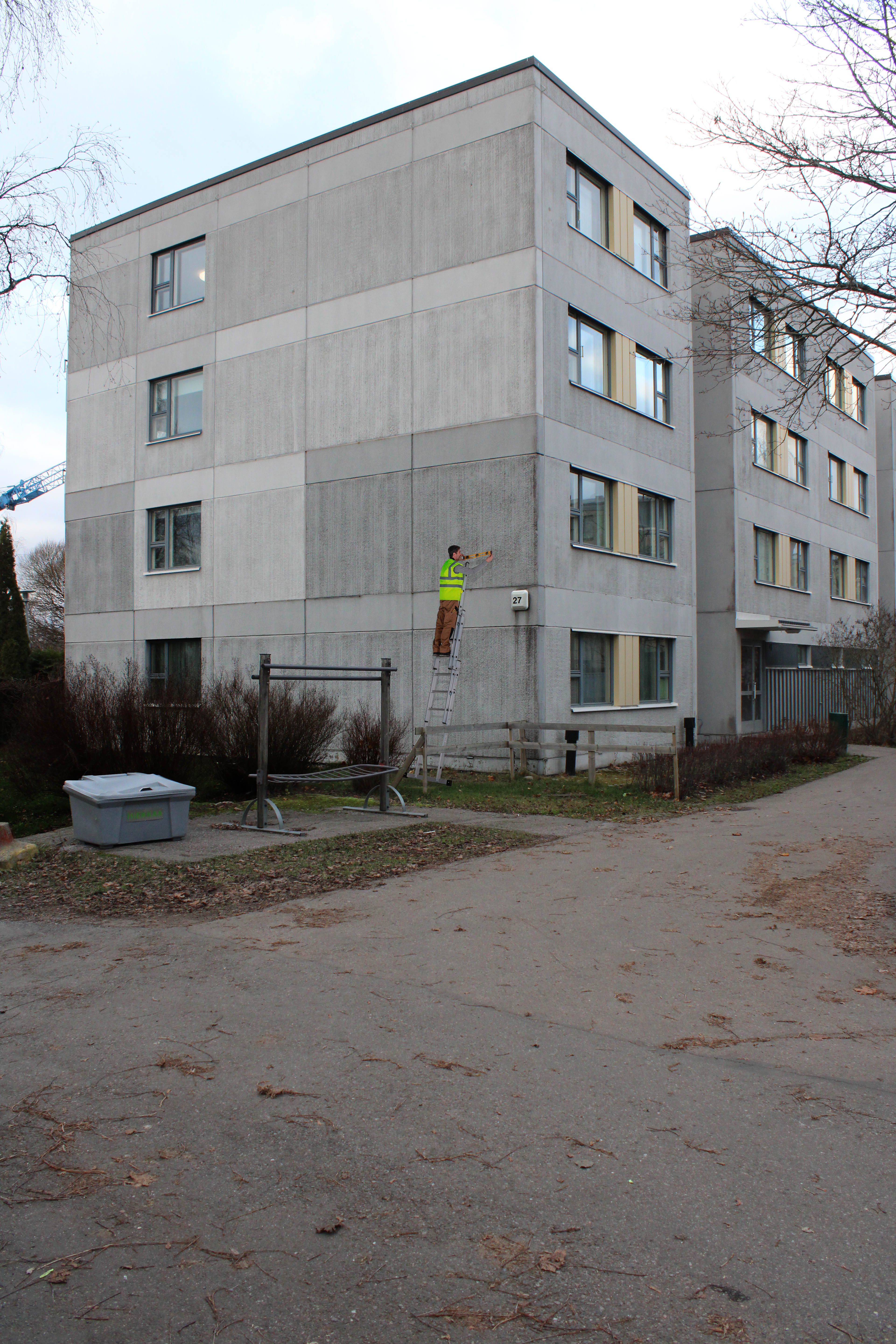Master's Thesis
Aalto University School of Arts, Design and Architecture 2022
Building Technology
Most of the building stock in Finland has been constructed after the Second World War. A great amount of construction took place during the heavy urbanization and industrialization of construction in the 1960s and 1970s. These decades saw the construction of significant new neighborhoods in Finnish cities, creation of the concrete element construction industry, and great changes in Finnish construction practices.
Now the building stock of these decades is approaching the renovation age. Certain building components are reaching the end of their life cycle and the architecture of the 1960s and 70s is in need of heavy repairs. At this crucial step in the buildings’ life cycle the architecture of this time is faced with the demands of economic dynamics, pressures to densify cities, new user needs, and ways of living. The future of many buildings from these decades is on the line as the owners make decisions on whether to repair or demolish and rebuild. In the age of overlapping environmental crises, replacing modern building stock with new construction would have devastating impacts, not to mention the social and cultural destructiveness. Modern built heritage needs to play a key part in building a livable future. Working with this building stock requires architecture of care, maintenance and regeneration rather than novel production.
This thesis studies the possible paths forward in continuing the life cycle of modern housing. The thesis focuses on multi storey residential buildings from the 1970s as they form a significant portion of the Finnish building stock. Industrialized and standardized construction of this era presents possibilities for replicable and scalable solutions that can be applied in many different case examples.
In the first part the thesis presents the historical context of modernism, and the contemporary context that related to modern buildingstock. In the second part the thesis analyzes the approaches to the preservation of modern housing through Finnish and international reference projects. In the third part the thesis applies the learnings from parts I and II to a case study site in Helsinki. Through the design, the thesis presents a process for repairing modern residential buildings and preserving them for generations to come.
read the complete work here


repair process
